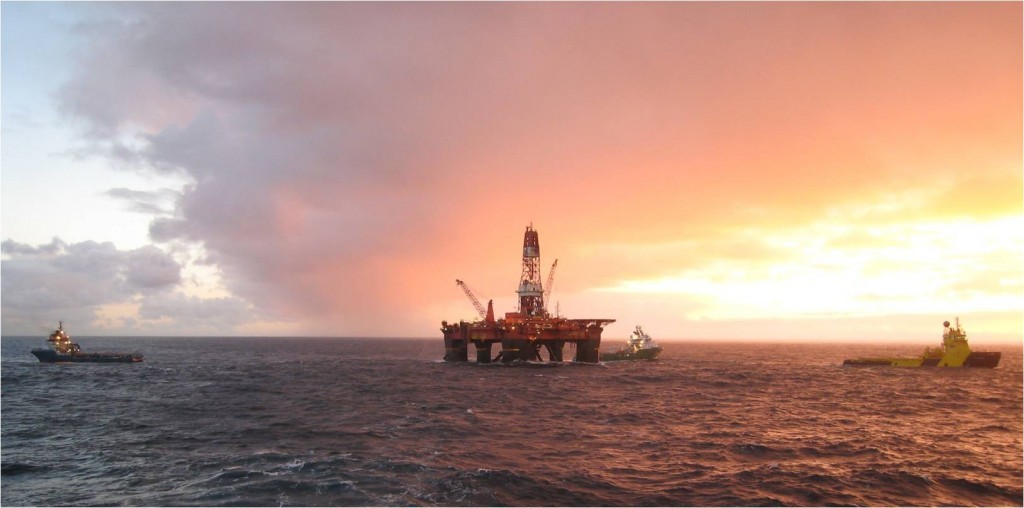
Pressure has mounted on the Treasury to introduce further tax breaks for the oil and gas industry as new research reveals that cost-cutting may not be enough to ensure the North Sea is attractive to investors.
Research led by renowned petroleum economist Professor Alex Kemp has found that even if cost cuts for exploration and development are implemented, returns for investors would be “greatly enhanced” – but may not be “sufficiently attractive” to ensure firms continue to explore for oil and gas in the region.
New exploration is considered key to the future of the province, and is a key plank of the Wood Review’s proposed strategy to “maximise economic recovery” in the North Sea.
Professor Kemp said: “The industry is all geared up to maximise economic recovery and it has become crystal clear that low exploration is a major problem.
“What’s interesting is that if you’re speaking to people in private they are still very interested in exploration but we need to get costs down to that viability clear.”
But he said the government and industry couldn’t rely on people to do their “patriotic” duty.
There are plenty of exploration managers who want to but they have to do their homework and calculations. They can’t just do it because it’s patriotic.
The report, co-authored by Linda Stephen, estimated that if operators reduced exploration and appraisal costs by 30% as well as taking 20% out of development and operating costs, “prospective returns” for North Sea explorers would be “greatly enhanced”.
But the report pointed to a number of incentives that the government could put in place to reverse declining exploration. This would be in addition to the £1.3billion package of measures for the North Sea revealed by Chancellor George Osborne in the March Budget.
“There are some that would like to see the government go further on the tax side because the industry is not making profits now and the is cash flow negative.” said Professor Kemp.
“The Treasury is always quite cautious in lowering taxes because they wonder what if goes back to $100 but there’s not much chance of that as it stands.
“Demand is growing but only sluggishly. American production is tapering off but not by much while Saudi Arabia is continuing to maintain its market share. What’s not gotten that much coverage is that Iraq production has come up quite significantly.
“Iran could increase production and it also has in storage a lot of oil that it’s not allowed to sell because of the sanctions. If the sanctions stop they would be able to unload all of that oil.
“I think $45 is on the low side but I could see it being $50 oil for some time.”
“If I were in charge I would look seriously at the tax allowances and keep calculating the pre and post-tax scenarios we could reduce the disincentives through that,” he added.
The report noted that oil and gas discoveries have declined in recent years from 13 in 2007 to only nine in 2014.
“It is possible that further tax incentives to exploration could be introduced,” the report said.
These include a refundable tax credit payable to explorers that are currently not making money – or paying tax – on oil and gas production. Another suggestion is a tax break on the costs to explorers of an unsuccessful well. Producers that explore should also be allowed to offset its use of current investment allowances against income from production.
Professor Kemp said there was also an opportunity in the downturn for smaller, nimbler companies to gain access to a frontier, which was previously priced out of their reach.
He said: “In 1986 when oil was $10 there was a company that was continuing to explore. I knew the chief executive and I asked him why. He said ‘I never drilled cheaper wells then I did now’.
“And I wonder to what extent are companies seeing that they for what could be a limited time they have access to wells for reduced price.”
Asked what a healthy exploration frontier looks like, Professor Kemp said: “It’s not that long ago that we had over 20 wells in a year and that seems like a healthy number.”
The study revealed that spiralling cost in the run up to 2014 meant that up to 94% of prospects in all North Sea regions faced the risk of delivering negative returns.
The report showed that the average costs per exploration and appraisal wells had trebled, rising from just under £12million in 2009 to £36.4 million in 2013. Figures showed that these costs had already started to decline, to£34.3 million last year.
